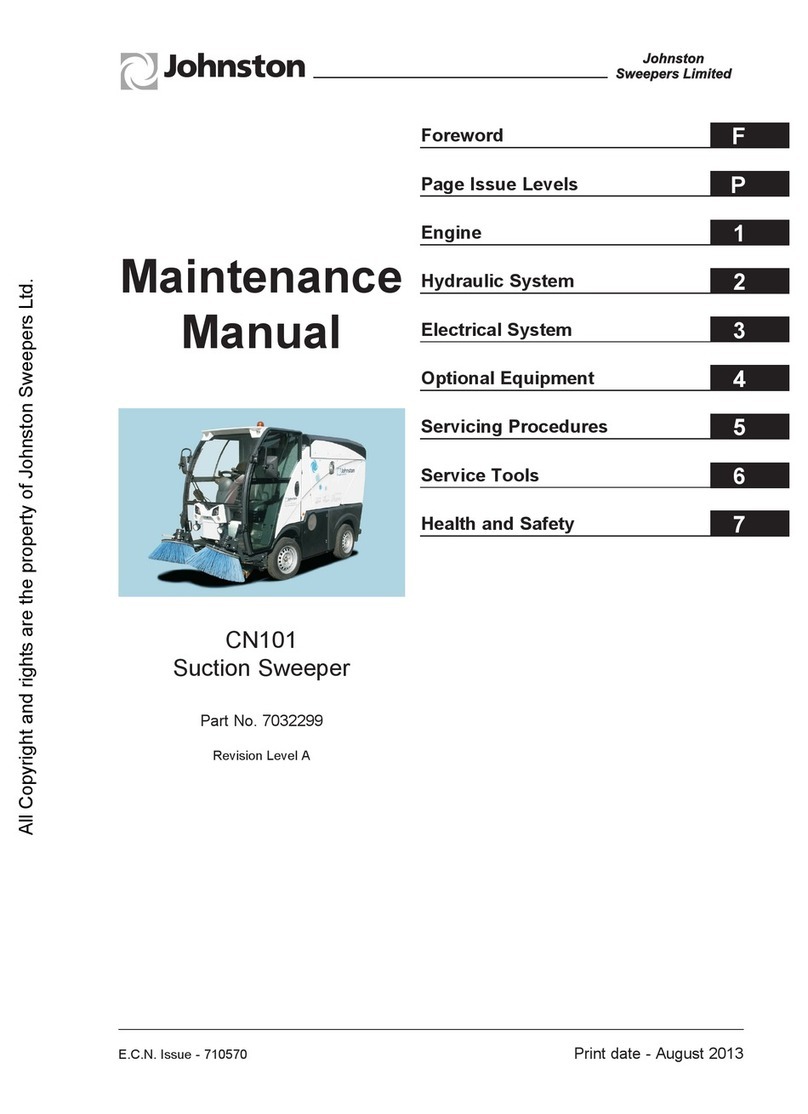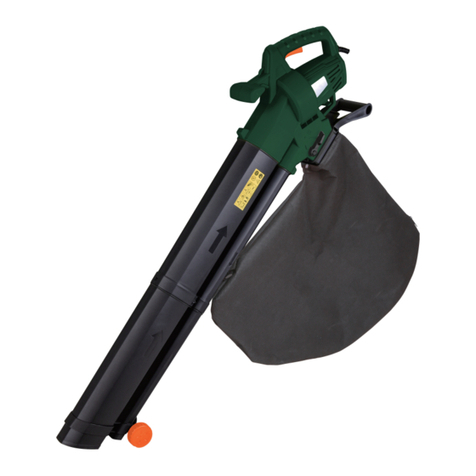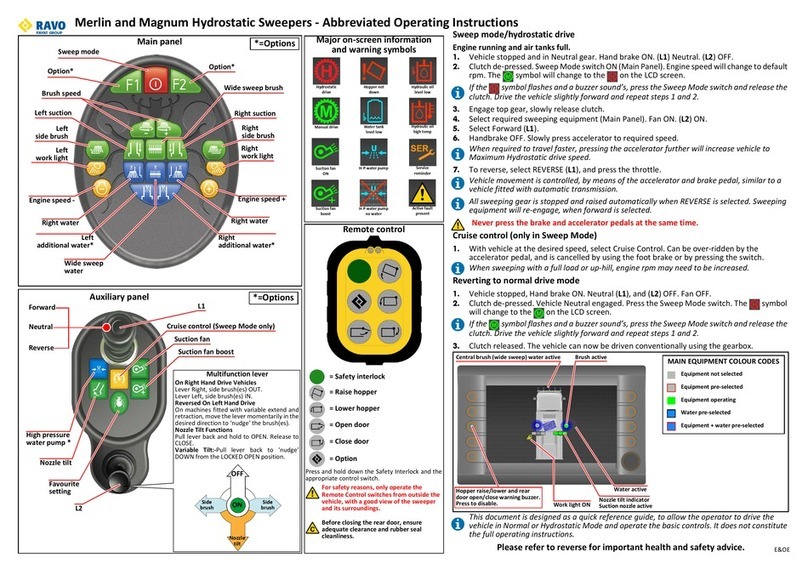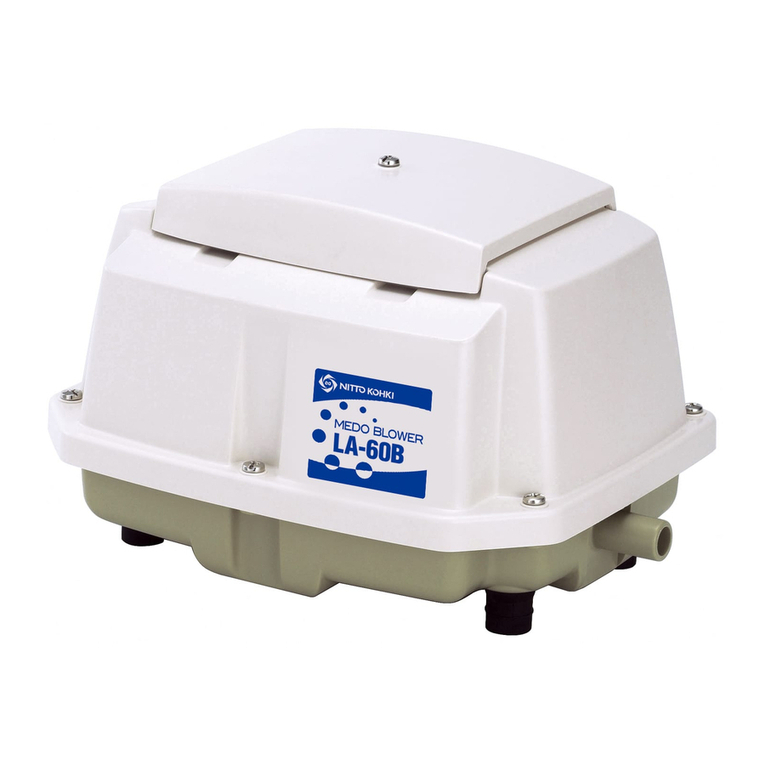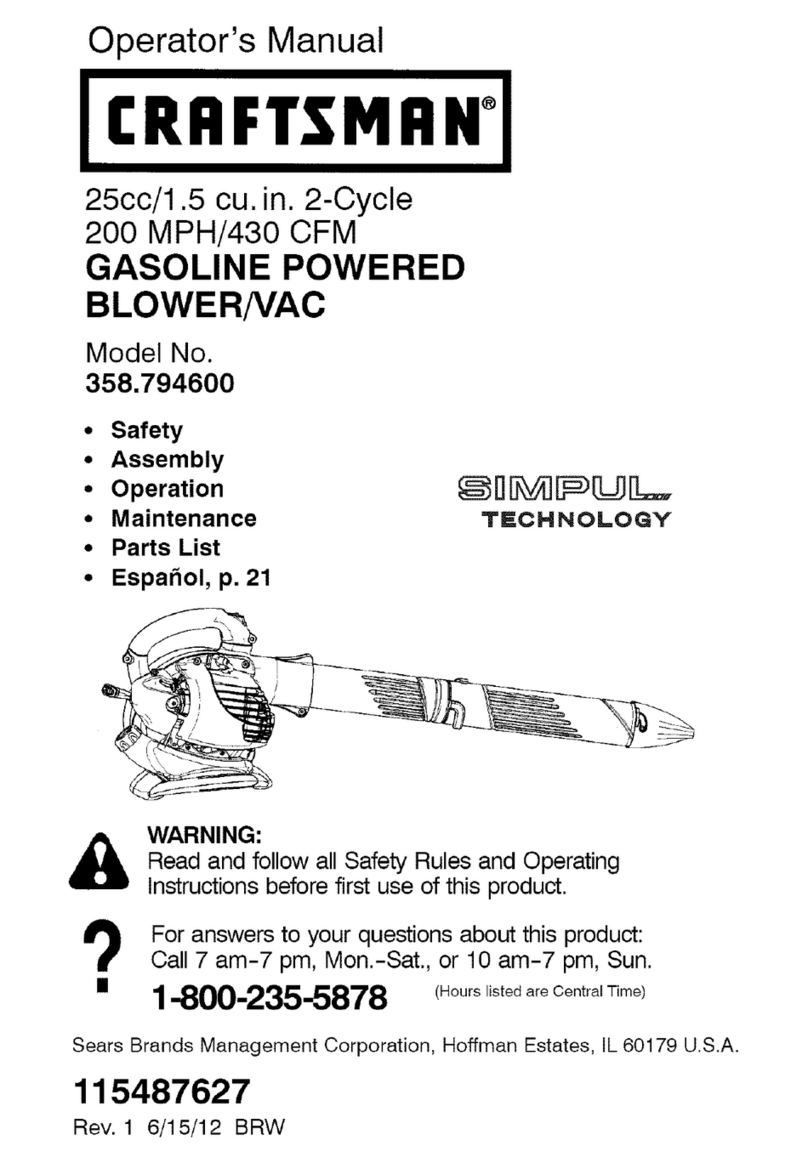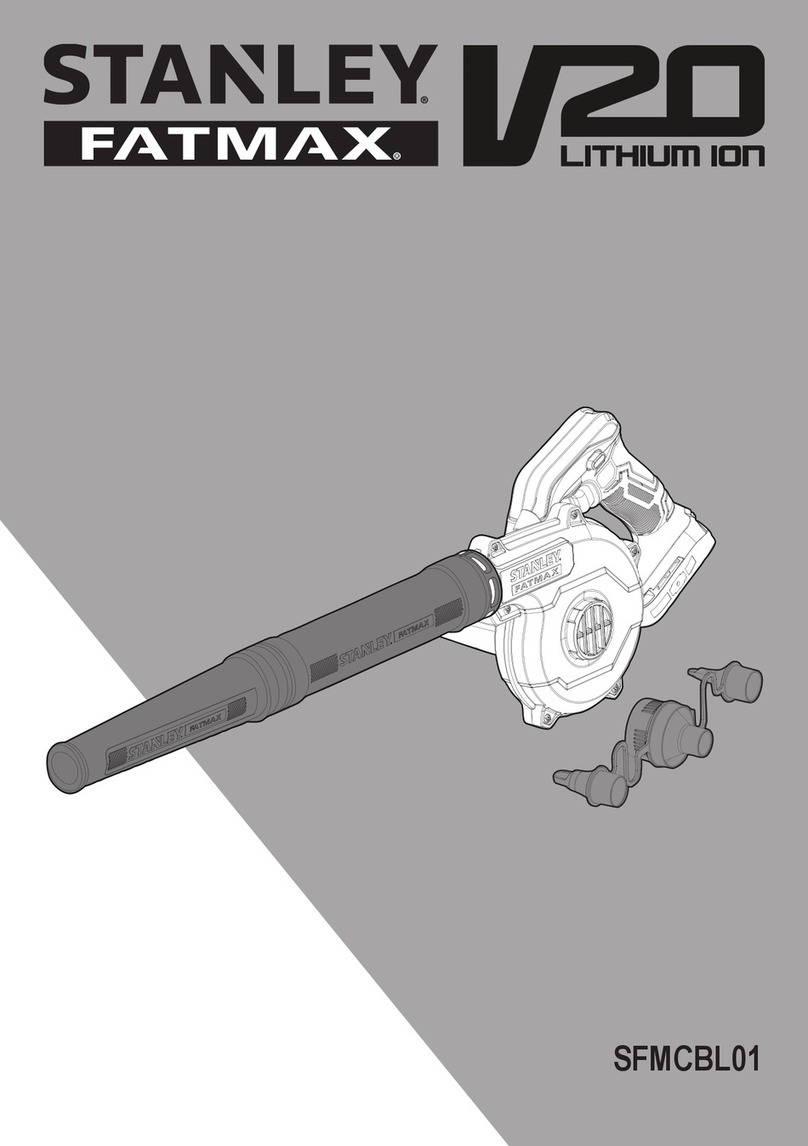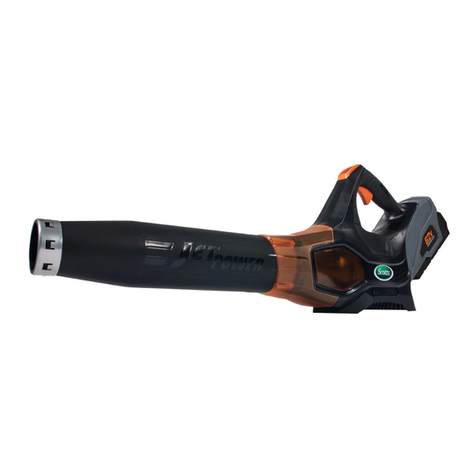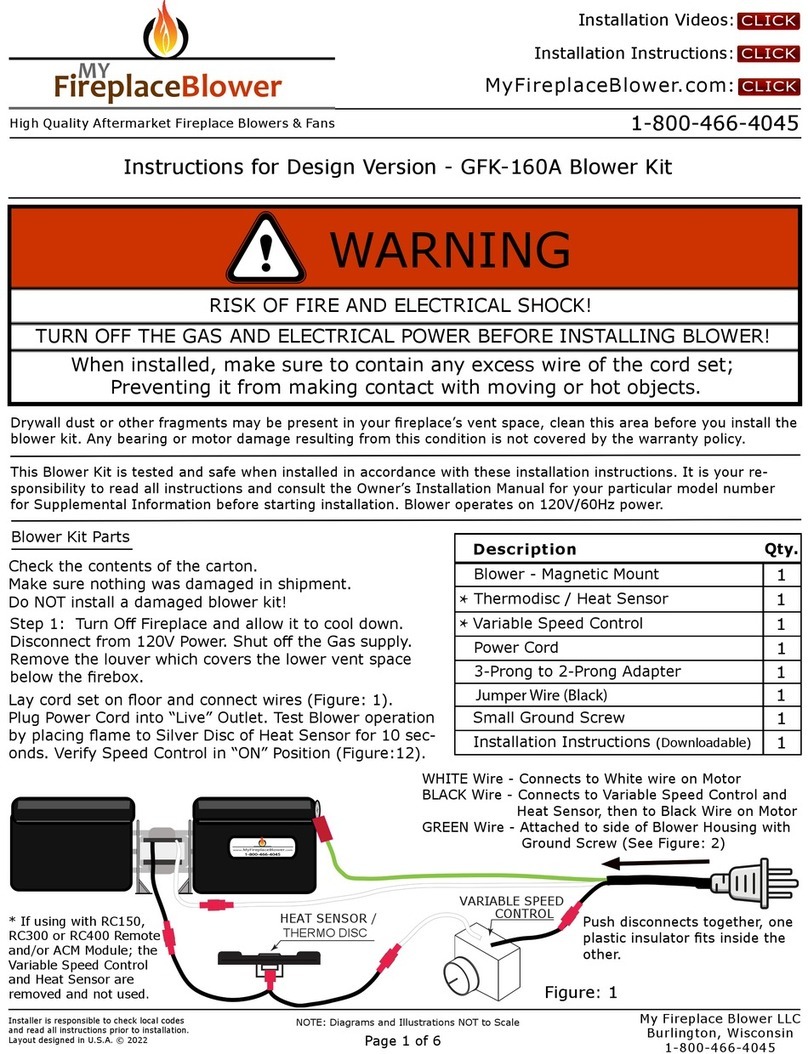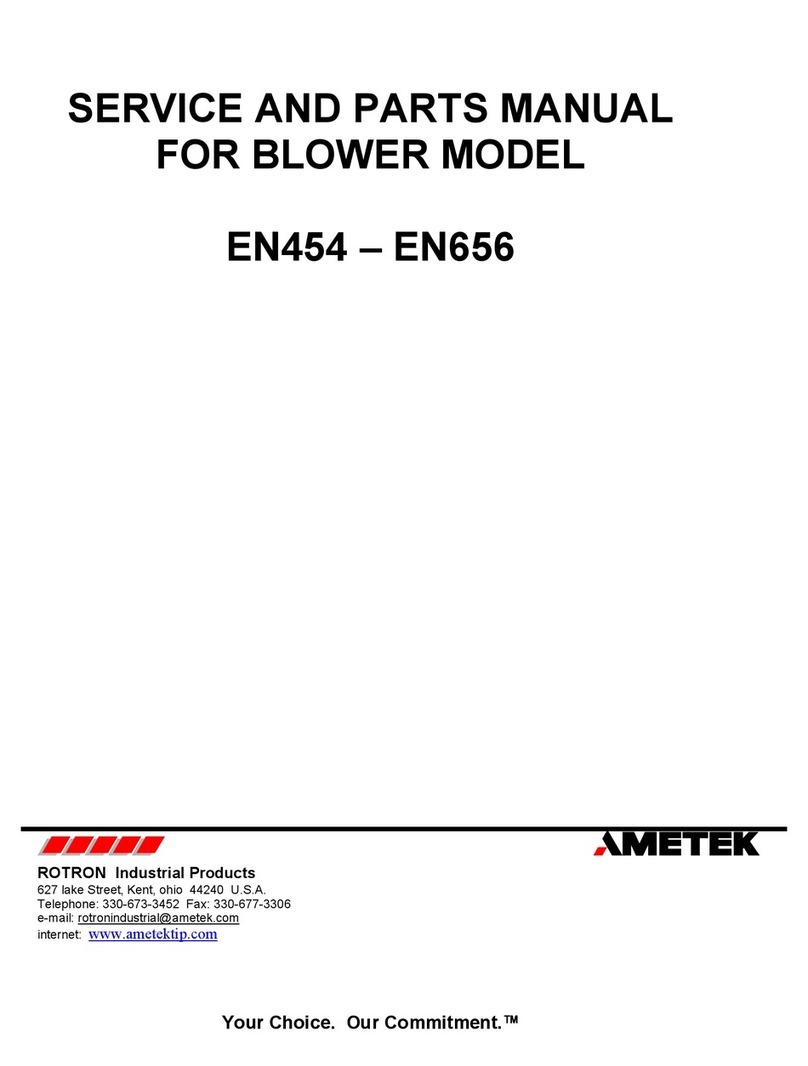KAESER KOMPRESSOREN HBPI pr User manual

Warning Notice:
The information contained in this pdf file is proprietary to Kaeser Compressors, Inc. AND MAY NOT BE ALTERED
IN ANY WAY. ALTERATION OF THE INFORMATION CONTAINED HEREIN MAY RESULT IN MISUSE OF
EQUIPMENT WHICH COULD RESULT IN SERIOUS INJURY. KAESER COMPRESSORS, INC. ASSUMES NO
LIABILITY FOR ANY ALTERED INFORMATION. The information may also contain privileged and confidential
information. Under no circumstances may this document or any part of this document be provided to unauthorized
person/companies without the written permission of Kaeser Compressor. Thank you for your cooperation.

1 Regarding this Document
1.1 Using this document ......................................................................................................... 1
1.2 Further documents ........................................................................................................... 1
1.3 Copyright .......................................................................................................................... 1
1.4 Symbols and labels .......................................................................................................... 1
1.4.1 Warnings ............................................................................................................. 1
1.4.2 Potential damage warnings ................................................................................ 2
1.4.3 Other alert notes and their symbols .................................................................... 2
2 Technical Data
2.1 Nameplate ........................................................................................................................ 4
2.2 Option codes .................................................................................................................... 4
2.3 Weight .............................................................................................................................. 5
2.4 Drive motor ....................................................................................................................... 6
2.5 Recommended oil ............................................................................................................ 6
2.6 Lubricating oil charge ....................................................................................................... 6
2.7 Temperature ..................................................................................................................... 7
2.8 Ambient and intake conditions ......................................................................................... 7
2.9 Filter maintenance indicator ............................................................................................. 8
2.10 Pressure display ............................................................................................................... 8
2.11 Sound pressure level/sound power level ......................................................................... 8
2.12 Power Supply ................................................................................................................... 8
2.13 Power supply specifications ............................................................................................. 9
2.14 Options ............................................................................................................................. 9
2.14.1 Oil level monitoring ............................................................................................. 9
2.14.2 Pressure switch .................................................................................................. 10
2.14.3 Speed monitor .................................................................................................... 10
2.14.4 Unloaded start valve (AFE) ................................................................................. 11
2.14.5 Temperature gauge switch ................................................................................. 11
2.14.6 Pressure sensor .................................................................................................. 12
2.14.7 Thermostat .......................................................................................................... 12
2.14.8 Filter pressure differential switch ........................................................................ 13
2.14.9 Check valve ........................................................................................................ 13
2.14.10 Auxiliary heating ................................................................................................. 13
2.14.11 Piped inlet ........................................................................................................... 14
2.14.12 Sound enclosure ................................................................................................. 14
3 Safety and Responsibility
3.1 Basic instructions ............................................................................................................. 15
3.2 Specified use .................................................................................................................... 15
3.3 Improper use .................................................................................................................... 15
3.4 User’s responsibilities ...................................................................................................... 16
3.4.1 Observe statutory and universally accepted regulations .................................... 16
3.4.2 Determining personnel ........................................................................................ 16
3.5 Dangers ............................................................................................................................ 16
3.5.1 Safely dealing with sources of danger ................................................................ 16
3.5.2 Safe machine operation ...................................................................................... 19
3.5.3 Organizational measures .................................................................................... 21
3.6 Danger areas ................................................................................................................... 21
3.7 Safety devices .................................................................................................................. 21
3.8 Safety signs ...................................................................................................................... 22
3.9 In emergency ................................................................................................................... 24
3.9.1 Correct fire fighting ............................................................................................. 24
3.9.2 Remove lubricating oil from the skin. .................................................................. 24
3.10 Environmental protection ................................................................................................. 24
Contents
Number: 9_9572 28 USE
Installation and Operating Manual Rotary lobe blower
HBPI pr i

3.11 Warranty ........................................................................................................................... 24
4 Design and Function
4.1 Machine ............................................................................................................................ 26
4.2 Blower block ..................................................................................................................... 27
4.3 Safety relief valve ............................................................................................................. 27
4.4 Safety devices .................................................................................................................. 28
4.5 Compensator .................................................................................................................... 28
4.6 Filter maintenance indicator ............................................................................................. 28
4.7 Pressure gauge ................................................................................................................ 28
4.8 Floating relay contacts ..................................................................................................... 29
4.9 Options ............................................................................................................................. 29
4.9.1 Oil level monitor .................................................................................................. 29
4.9.2 Pressure switch .................................................................................................. 29
4.9.3 Speed monitor .................................................................................................... 30
4.9.4 Unloaded start valve ........................................................................................... 30
4.9.5 Temperature gauge switch ................................................................................. 31
4.9.6 Pressure sensor .................................................................................................. 31
4.9.7 Thermostat .......................................................................................................... 32
4.9.8 Filter pressure differential switch ........................................................................ 32
4.9.9 Check valve ........................................................................................................ 33
4.9.10 Auxiliary heating ................................................................................................. 34
4.9.11 Outdoor installation ............................................................................................. 34
4.9.12 Piped inlet ........................................................................................................... 34
4.9.13 Sound enclosure ................................................................................................. 35
5 Installation and Operating Conditions
5.1 Ensuring safety ................................................................................................................ 36
5.2 Installation conditions ....................................................................................................... 36
5.2.1 Determining location and clearances .................................................................. 36
5.2.2 Ensuring adequate ventilation ............................................................................ 37
5.3 Outdoor installation .......................................................................................................... 38
6 Installation
6.1 Ensuring safety ................................................................................................................ 39
6.2 Reporting transport damage ............................................................................................ 40
6.3 Anchoring the machine .................................................................................................... 40
6.4 Do not remove or change the adjusting screw of the pivoted motor base ....................... 40
6.5 Connecting the machine to the power supply .................................................................. 41
6.5.1 For frequency control .......................................................................................... 41
6.6 Installing the inlet silencer ................................................................................................ 43
6.7 Installing accessories at the T-piece ................................................................................ 43
6.8 Creating the compressed air connection .......................................................................... 44
6.9 Safety devices installed by the user ................................................................................. 45
6.10 Options ............................................................................................................................. 45
6.10.1 Connecting the oil level monitor .......................................................................... 45
6.10.2 Connecting the pressure switch .......................................................................... 45
6.10.3 Connecting the speed monitor ............................................................................ 45
6.10.4 Connecting the temperature gauge switch ......................................................... 46
6.10.5 Connecting the pressure sensor ......................................................................... 46
6.10.6 Connecting the thermostat .................................................................................. 46
6.10.7 Connecting the filter pressure differential switch ................................................ 46
6.10.8 Installing the check valve .................................................................................... 46
6.10.9 Installing the auxiliary heater .............................................................................. 47
6.10.10 Connecting the suction line ................................................................................. 47
6.10.11 Sound enclosure ................................................................................................. 48
Contents
ii
Installation and Operating Manual Rotary lobe blower
HBPI pr Number: 9_9572 28 USE

7 Initial Start-up
7.1 Ensuring safety ................................................................................................................ 57
7.2 Instructions to be observed before commissioning .......................................................... 58
7.3 Checking installation and operating conditions ................................................................ 58
7.4 Re-greasing the motor bearings ....................................................................................... 59
7.5 Checking the direction of rotation ..................................................................................... 59
7.5.1 Drive motor ......................................................................................................... 59
7.5.2 Ventilator fan (sound enclosure) ......................................................................... 59
8 Operation
8.1 Switching on and off ......................................................................................................... 60
8.1.1 Switching on ....................................................................................................... 60
8.1.2 Switching off ....................................................................................................... 60
8.2 Switching off in an emergency ......................................................................................... 60
8.3 Checking the ventilator fan function (sound enclosure) ................................................... 61
9 Fault Recognition and Rectification
9.1 Basic instructions ............................................................................................................. 62
9.2 Faults ............................................................................................................................... 62
9.3 Options ............................................................................................................................. 63
9.3.1 Sound enclosure faults ....................................................................................... 63
9.3.2 Faulty pressure sensor ....................................................................................... 64
10 Maintenance
10.1 Ensuring safety ................................................................................................................ 65
10.2 Maintenance schedule ..................................................................................................... 66
10.2.1 Logging maintenance work ................................................................................. 66
10.2.2 Regular maintenance tasks ................................................................................ 66
10.2.3 Regular service tasks ......................................................................................... 67
10.3 Sound enclosure .............................................................................................................. 68
10.4 Drive belt maintenance .................................................................................................... 68
10.5 Checking the oil level ....................................................................................................... 69
10.6 Replenishing lubricating oil .............................................................................................. 70
10.7 Changing the oil ............................................................................................................... 71
10.8 Air filter maintenance ....................................................................................................... 72
10.8.1 Filter maintenance indicator ................................................................................ 73
10.8.2 Filter pressure differential switch ........................................................................ 73
10.8.3 Changing the air filter .......................................................................................... 74
10.9 Machine cleaning ............................................................................................................. 74
10.10 Motor maintenance .......................................................................................................... 75
10.10.1 Drive motor bearings with re-greasing fittings .................................................... 75
10.10.2 Sound enclosure fan motor ................................................................................. 76
10.11 Testing the safety relief valve ........................................................................................... 76
10.12 Checking rotors for contamination ................................................................................... 77
10.13 Documenting maintenance and service work .................................................................. 78
11 Spares, Operating Materials, Service
11.1 Note the nameplate .......................................................................................................... 79
11.2 Ordering consumable parts and operating fluids/materials .............................................. 79
11.3 Spare parts for service and repair .................................................................................... 79
11.3.1 HB 1300 PI pr ..................................................................................................... 79
11.3.2 HB 1600 PI pr ..................................................................................................... 82
11.4 KAESER AIR SERVICE ................................................................................................... 85
11.5 Completing the contamination declaration ....................................................................... 85
12 Decommissioning, Storage and Transport
12.1 Decommissioning ............................................................................................................. 86
Contents
Number: 9_9572 28 USE
Installation and Operating Manual Rotary lobe blower
HBPI pr iii

12.2 Packing ............................................................................................................................ 86
12.3 Transport .......................................................................................................................... 87
12.3.1 Safety .................................................................................................................. 87
12.3.2 Transport with a forklift truck ............................................................................... 87
12.3.3 Transport with a crane ........................................................................................ 87
12.4 Storage ............................................................................................................................. 87
12.5 Disposal ........................................................................................................................... 88
13 Annex
13.1 Pipeline and instrument flow diagram (P+I diagram) ....................................................... 89
13.2 Dimensional drawing ........................................................................................................ 92
13.3 Design diagrams .............................................................................................................. 96
13.4 Sound emission ................................................................................................................ 99
13.5 Drive motor electrical diagram ......................................................................................... 104
13.6 Electrical diagrams for options ......................................................................................... 114
13.6.1 Oil level monitoring – wiring diagram .................................................................. 114
13.6.2 Pressure switch wiring diagram .......................................................................... 117
13.6.3 Speed monitor wiring diagram ............................................................................ 117
13.6.4 Temperature gauge switch wiring diagram ......................................................... 117
13.6.5 Pressure sensor connections ............................................................................. 117
13.6.6 Thermostat wiring diagram ................................................................................. 118
13.6.7 Filter pressure differential switch wiring diagram ................................................ 118
13.6.8 Auxiliary heater wiring diagram ........................................................................... 118
13.6.9 Sound enclosure fan motor wiring plan .............................................................. 123
13.7 Project planning data ....................................................................................................... 123
Contents
iv
Installation and Operating Manual Rotary lobe blower
HBPI pr Number: 9_9572 28 USE

Fig. 1 Three-phase star (wye); 4 wire; center point solidly grounded ................................................... 9
Fig. 2 Three-phase star (wye); 3 wire; center point solidly grounded ................................................... 9
Fig. 3 Position of the safety signs at the machine ................................................................................ 22
Fig. 4 Safety sign location, electronically actuated options .................................................................. 22
Fig. 5 Safety sign location, standstill heater, Option H2 ....................................................................... 22
Fig. 6 Machine ...................................................................................................................................... 26
Fig. 7 Blower block ............................................................................................................................... 27
Fig. 8 Safety relief valve (blow-off valve) .............................................................................................. 27
Fig. 9 Compensator .............................................................................................................................. 28
Fig. 10 Location of the pressure gauge .................................................................................................. 28
Fig. 11 Pressure switch .......................................................................................................................... 29
Fig. 12 Unloaded start valve ................................................................................................................... 30
Fig. 13 Diagram of the unloaded start valve ........................................................................................... 30
Fig. 14 Location of the temperature gauge ............................................................................................ 31
Fig. 15 Pressure sensor ......................................................................................................................... 32
Fig. 16 Thermostat ................................................................................................................................. 32
Fig. 17 Filter pressure differential switch ................................................................................................ 32
Fig. 18 Pressure connection to the filter pressure differential switch ..................................................... 33
Fig. 19 Filter pressure differential switch function .................................................................................. 33
Fig. 20 Check valve ................................................................................................................................ 34
Fig. 21 Auxiliary heating ......................................................................................................................... 34
Fig. 22 Sound enclosure overview ......................................................................................................... 35
Fig. 23 Recommended machine placement and minimum dimensions [in.] .......................................... 37
Fig. 24 Pivoted motor base .................................................................................................................... 40
Fig. 25 Installing the inlet silencer .......................................................................................................... 43
Fig. 26 Installing the T-piece .................................................................................................................. 43
Fig. 27 Installing the check valve ........................................................................................................... 46
Fig. 28 Installing the auxiliary heater ...................................................................................................... 47
Fig. 29 Sound enclosure: Measuring points, connection diagram .......................................................... 48
Fig. 30 Connecting elements .................................................................................................................. 55
Fig. 31 Sound enclosure ........................................................................................................................ 68
Fig. 32 Drive belt maintenance ............................................................................................................... 68
Fig. 33 Checking the oil level ................................................................................................................. 70
Fig. 34 Replenishing lubricating oil ......................................................................................................... 71
Fig. 35 Changing the oil ......................................................................................................................... 72
Fig. 36 Filter maintenance indicator (machine without sound enclosure) .............................................. 73
Fig. 37 Filter maintenance indicator (machine with sound enclosure) ................................................... 73
Fig. 38 Changing the air filter ................................................................................................................. 74
Fig. 39 Motor maintenance ..................................................................................................................... 76
Fig. 40 Testing the safety relief valve ..................................................................................................... 76
Fig. 41 Pressure switch wiring diagram .................................................................................................. 117
Fig. 42 Speed monitor wiring diagram .................................................................................................... 117
Fig. 43 Temperature gauge switch wiring diagram ................................................................................ 117
Fig. 44 Pressure sensor connections ..................................................................................................... 117
Fig. 45 Thermostat wiring diagram ......................................................................................................... 118
Fig. 46 Filter pressure differential switch wiring diagram ....................................................................... 118
Fig. 47 Three-phase motor connection .................................................................................................. 123
Fig. 48 Single-phase motor connection .................................................................................................. 123
List of Illustrations
Number: 9_9572 28 USE
Installation and Operating Manual Rotary lobe blower
HBPI pr v

List of Illustrations
vi
Installation and Operating Manual Rotary lobe blower
HBPI pr Number: 9_9572 28 USE

Tab. 1 Danger levels and their definition (personal injury) .................................................................... 1
Tab. 2 Danger levels and their definition (damage to property) ............................................................ 2
Tab. 3 Nameplate .................................................................................................................................. 4
Tab. 4 Option codes .............................................................................................................................. 4
Tab. 5 Weight without sound enclosure ................................................................................................ 5
Tab. 6 Weight with sound enclosure ..................................................................................................... 5
Tab. 7 Drive motor ................................................................................................................................. 6
Tab. 8 Recommended oil ...................................................................................................................... 6
Tab. 9 Lubricating oil charge ................................................................................................................. 7
Tab. 10 Temperature ............................................................................................................................... 7
Tab. 11 Ambient and intake conditions ................................................................................................... 7
Tab. 12 Filter maintenance indicator ....................................................................................................... 8
Tab. 13 Pressure display ......................................................................................................................... 8
Tab. 14 Oil level monitoring (Option C5) ................................................................................................. 9
Tab. 15 Pressure switch (option C9) ....................................................................................................... 10
Tab. 16 Speed monitoring sensor (Option C10) ...................................................................................... 10
Tab. 17 Speed monitoring device (Option C10) ...................................................................................... 10
Tab. 18 Setting of the speed monitor evaluation device (Option C10) .................................................... 11
Tab. 19 Unloaded start valve (AFE) ........................................................................................................ 11
Tab. 20 Temperature gauge switch (Option C13) ................................................................................... 11
Tab. 21 Pressure sensor (option C14) .................................................................................................... 12
Tab. 22 Thermostat (Option C19) ............................................................................................................ 12
Tab. 23 Filter pressure differential switch (Option F5) ............................................................................. 13
Tab. 24 Check valve (Option G1) ............................................................................................................ 13
Tab. 25 Auxiliary heating (Option H2) ..................................................................................................... 13
Tab. 26 Thermostatic auxiliary heating (Option H2) ................................................................................ 13
Tab. 27 Three phase power supply ......................................................................................................... 14
Tab. 28 Single phase power supply ........................................................................................................ 14
Tab. 29 Danger areas .............................................................................................................................. 21
Tab. 30 Safety signs ................................................................................................................................ 22
Tab. 31 Torques at the T-piece ............................................................................................................... 44
Tab. 32 Torques for customer pipeline .................................................................................................... 44
Tab. 33 Inlet compressor torques ............................................................................................................ 47
Tab. 34 Sound enclosure assembly (Option H12) ................................................................................... 49
Tab. 35 Recommissioning after storage/standstill ................................................................................... 58
Tab. 36 Installation conditions checklist .................................................................................................. 58
Tab. 37 Faults and remedies ................................................................................................................... 62
Tab. 38 Faults and remedies (option H12) .............................................................................................. 63
Tab. 39 Faults and remedies (Option C14) ............................................................................................. 64
Tab. 40 Regular maintenance tasks ........................................................................................................ 66
Tab. 41 Regular service tasks ................................................................................................................. 67
Tab. 42 Logged maintenance tasks ........................................................................................................ 78
Tab. 43 Consumable parts and operating fluids/materials ...................................................................... 79
Tab. 44 Blower block diagram (machine layout) ..................................................................................... 96
Tab. 45 Diagram legend .......................................................................................................................... 96
Tab. 46 Sound emission - legend ............................................................................................................ 99
List of Tables
Number: 9_9572 28 USE
Installation and Operating Manual Rotary lobe blower
HBPI pr vii

List of Tables
viii
Installation and Operating Manual Rotary lobe blower
HBPI pr Number: 9_9572 28 USE

1 Regarding this Document
1.1 Using this document
This document, hereafter called the service manual, contains important information about all life
phases of the machine.
The operating manual is a component of the product. It describes the machine as it was at the time
of first delivery after manufacture.
➤ Keep the service manual in a safe place throughout the life of the machine.
➤ Supply any successive owner or user with this service manual.
➤ Please insert any amendment or revision of the service manual sent to you.
➤ Enter details from the machine nameplate and individual items of equipment in the table in
chapter 2.
1.2 Further documents
Included with this operating manual are additional documents intended to assist in the safe opera‐
tion of the machine:
■ Manufacturer's/installation declaration according to applicable directives
■ Motor manual
Missing documents can be requested from KAESER.
➤ Make sure all documents are complete and observe the instructions contained in them.
➤ Make sure you provide the data from the nameplate when ordering documents.
1.3 Copyright
This operator manual is copyright protected. Queries regarding use or duplication of the documen‐
tation should be referred to KAESER. Correct use of information will be fully supported.
1.4 Symbols and labels
➤ Please note the symbols and labels used in this document.
1.4.1 Warnings
Warnings indicate danger potentially resulting in personal injury, if the measures specified are not
taken.
Warnings indicate three levels of danger identified by the corresponding signal word:
Signal term Meaning Consequences of non-compliance
DANGER Warns of imminent danger Will very likely result in death or severe injury
WARNING Warns of potentially imminent danger May result in death or severe injury
CAUTION Warns of a potentially dangerous situa‐
tion
May result in moderate physical injury
Tab. 1 Danger levels and their definition (personal injury)
1 Regarding this Document
1.1 Using this document
Number: 9_9572 28 USE
Installation and Operating Manual Rotary lobe blower
HBPI pr 1

Warning notes may precede a chapter. They apply to the entire chapter including all sub-sections.
Example:
The type and source of the imminent danger is shown here!
The possible consequences of ignoring a warning are shown here.
The word "DANGER" indicates that death or severe injury can very likely result from ignoring
the warning.
➤ The measures required to protect yourself from danger are shown here.
Warning notes referring to a sub-section or the subsequent step are integrated into the procedure
and numbered as a step.
Example:
1.
The type and source of the imminent danger is shown here!
The possible consequences of ignoring a warning are shown here.
The word "WARNING" indicates that death or severe injury may result from ignoring the warn‐
ing.
➤ The measures required to protect yourself from danger are shown here.
2. Always read and comply with warning instructions.
1.4.2 Potential damage warnings
Contrary to the warnings shown above, damage warnings do not indicate potential personal injury.
Damage warnings have only one danger level, identified by this signal word:
Signal term Meaning Consequences of non-compliance
NOTE Warns of a potentially dangerous situation Damage to property is possible
Tab. 2 Danger levels and their definition (damage to property)
Example:
The type and source of the imminent danger is shown here!
Potential effects when ignoring the warning are indicated here.
➤ The protective measures against the damages are shown here.
➤ Carefully read and fully comply with warnings against damages.
1.4.3 Other alert notes and their symbols
This symbol indicates particular important information.
1 Regarding this Document
1.4 Symbols and labels
2
Installation and Operating Manual Rotary lobe blower
HBPI pr Number: 9_9572 28 USE

Material Here you will find details on special tools, operating materials or spare parts.
Precondition Here you will find conditional requirements necessary to carry out the task.
The conditional requirements relevant to safety shown here will help you to avoid dangerous situa‐
tions.
➤ This symbol is placed by lists of actions comprising one stage of a task.
Operating instructions with several steps are numbered in the sequence of the operating steps.
Information relating to one option only are marked with an option code (e.g., H12 indicates that
this section applies only to machines with sound enclosure). Option codes used in this operat‐
ing manual are explained in chapter 2.2.
Information referring to potential problems are identified by a question mark.
The cause is specified in the help text ...
➤ ... as is a solution.
This symbol refers to important information or measures concerning environmental protec‐
tion.
Further information Further subjects are introduced here.
1 Regarding this Document
1.4 Symbols and labels
Number: 9_9572 28 USE
Installation and Operating Manual Rotary lobe blower
HBPI pr 3
Option H12

2 Technical Data
2.1 Nameplate
The machine's nameplate provides the model designation and important technical information.
The nameplate is attached to the machine stand and at the left side wall of the sound enclosure
(Option H12).
The nameplate data relates to Standard intake state of 14.7 psi and 68 °F.
➤ Enter the data from the nameplate here as a reference.
Feature Value
Rotary lobe blowers
Material No.
Serial No.
Ambient temperature
Rated motor power
Max. working pressure PS
Rated motor speed
Full load current
Full load current drive motor
Power supply
Electrical diagram
Year of manufacture
Tab. 3 Nameplate
2.2 Option codes
The table contains a list of possible options.
➤ Enter options here as a reference:
Option Option code Installed?
Operating mode: Gauge pressure B13 ✓
Oil level monitoring C5
Pressure switch C9
Speed monitor C10
Unloaded start valve (AFE) C11
Temperature gauge switch C13 ✓
Pressure transducer C14
Unloaded start valve with regulating valve (AFR) C18 —
Thermostat C19
Installed: ✓
Not available: —
2 Technical Data
2.1 Nameplate
4
Installation and Operating Manual Rotary lobe blower
HBPI pr Number: 9_9572 28 USE

Option Option code Installed?
Under frequency control C32
Filter differential pressure switch F5
Check valve G1
Auxiliary heating H2
Outdoor installation H3
Intake from pipe network H11
Sound enclosure H12
Installed: ✓
Not available: —
Tab. 4 Option codes
2.3 Weight
The indicated weight refers to the machine including the drive motor, but without options. The ac‐
tual weight of individual machines depends on equipment fitted.
Machine without sound enclosure
Weight [lb.]
Rated power [hp] HB 1300 PI pr HB 1600 PI pr —
75.0 5688 6041 —
100.0 5941 6294 —
125.0 6162 6515 —
150.0 6459 6812 —
175.0 6801 7154 —
200.0 7110 7463 —
250.0 7551 7904 —
300.0 7639 7992 —
—— — —
Tab. 5 Weight without sound enclosure
Machine with sound enclosure
Weight [lb.]
Rated power [hp] HB 1300 PI pr HB 1600 PI pr —
75.0 7495 7848 —
100.0 7749 8102 —
125.0 7969 8322 —
150.0 8267 8620 —
175.0 8309 8962 —
200.0 8918 9270 —
2 Technical Data
2.3 Weight
Number: 9_9572 28 USE
Installation and Operating Manual Rotary lobe blower
HBPI pr 5
Option H12

Weight [lb.]
Rated power [hp] HB 1300 PI pr HB 1600 PI pr —
250.0 9358 9711 —
300.0 9447 9800 —
— — — —
Tab. 6 Weight with sound enclosure
2.4 Drive motor
➤ Copy the data from the motor nameplate or service plate into the table:
Feature Value
Enclosure protection IP 55
Motor bearing re-greasing interval *[h] 2000
Grease requirement, each bearing [g]
h = operating hours
* The lubricating interval is max. 2000 h, even if a longer interval is indicated on the motor service
plate.
Tab. 7 Drive motor
2.5 Recommended oil
The lubricant type to be used depends on the operating conditions.
OMEGA FLUID
SB 220 FGB 220
Description Synthetic oil Synthetic oil
Application Suitable for all applications, ex‐
cept food processing.
Specifically for applications where the com‐
pressed air comes into contact with food prod‐
ucts.
Tab. 8 Recommended oil
Further information An adhesive label identifying the used lubricating oil is attached to the blower block and the belt
guard.
Information on ordering oil is found in chapter 11.2.
2.6 Lubricating oil charge
The block oil chambers are filled with oil at the factory.
2 Technical Data
2.4 Drive motor
6
Installation and Operating Manual Rotary lobe blower
HBPI pr Number: 9_9572 28 USE

Guide value
Drive-end Gear-end
Lubricating oil charge [qt] 2.4 ±15% 3.4 ±15%
Tab. 9 Lubricating oil charge
2.7 Temperature
HB 1300 PI pr HB 1600 PI pr
Maximum block dis‐
charge temperature [°F]
320 320
Maximum temperature
differential [K] *
115 115
*Discharge temperature minus inlet temperature
Tab. 10 Temperature
2.8 Ambient and intake conditions
The following conditions must be maintained:
■ No salty atmosphere in the immediate vicinity of the machine.
■ The air must be free of chemicals or explosive substances.
HB 1300 PI pr HB 1600 PI pr
Permissible ambient tem‐
perature [°F]
23 – 104 23 – 104
Machine with connected
auxiliary heating and
sound enclosure (Options
H2, H12)
Permissible ambient tem‐
perature [°F]
5 – 104 5 – 104
Permissible intake tem‐
perature [°F]
5 – 104 5 – 104
Relative humidity [%] 0 – 80 0 – 80
Maximum altitude AMSL
[ft.]
3281 3281
Tab. 11 Ambient and intake conditions
For other ambient and intake conditions, please consult KAESER.
Further information The wiring diagram for Option H2 in chapter 13.6.8 contains further details of the power supply
connection.
2 Technical Data
2.7 Temperature
Number: 9_9572 28 USE
Installation and Operating Manual Rotary lobe blower
HBPI pr 7

2.9 Filter maintenance indicator
Feature Data
Indicator range [psi] 0 – 0.8
Tab. 12 Filter maintenance indicator
2.10 Pressure display
Feature Data
Indicator range [psig] 0 – 23.2
Tab. 13 Pressure display
2.11 Sound pressure level/sound power level
Operating state LOAD under the following conditions:
■ Nominal speed
■ Nominal flow rate
■ Nominal pressure
Measuring condition according to DIN EN ISO 2151 and basic standard ISO 9614–2:
■ Measurement distance: 3 ft
■ Tolerance: ±3 dB(A)
■ Sound insulated pipeline
Further information The sound pressure level and sound power level values for your machine are provided in the ta‐
bles shown in chapter 13.4.
These values refer to the design condition.
2.12 Power Supply
Basic requirements
The machine is designed for an electrical supply according to National Electric Code (NEC), edi‐
tion 2017, particularly article 670 and NFPA 79, edition 2015, particularly section 4.3. In the ab‐
sence of any user-specified alternatives, the limits given in these standards must be adhered to.
Consult manufacturer for any other specific power supply.
The incoming line within the control panel should be as short as possible.
If external sensors or communication lines are to be connected to the machine, use shielded ca‐
bles and insert the same through EMC fittings into the control panel.
Three-phase
Do NOT operate package on any unsymmetrical power supply. Also do NOT operate package on
power supplies such as a three phase WYE system with center point not solidly grounded or three-
phase (open) delta.
2 Technical Data
2.9 Filter maintenance indicator
8
Installation and Operating Manual Rotary lobe blower
HBPI pr Number: 9_9572 28 USE

The machine requires a symmetrical three-phase power supply transformer with a WYE configura‐
tion output as shown in Figure 1 and Figure 2. In a symmetrical three phase supply the phase an‐
gles and voltages are all the same.
Other power supplies are not suitable.
Fig. 1 Three-phase star (wye); 4 wire; center point solidly grounded
Fig. 2 Three-phase star (wye); 3 wire; center point solidly grounded
Further information Please contact an authorized KAESER service representative for options.
The electrical diagram 13.5 contains further specifications for electrical connection.
2.13 Power supply specifications
The following multi-strand copper core wires are given according to 2017 NEC 310.1, Table
310.15(B)(16) for 40 °C ambient temperature.
If other local conditions prevail, like for example high temperature, the cross section should be
checked and adjusted according to 2017 NEC 110.14(C), 220.3, 310.15, Table 310.15(B)(2)(a),
430.6,430.22, 430.24, 670.4(A) and other local codes.
Dual element time delay fuses are selected according to 2017 NEC 240.6 , 430.52 and tables
430.52, 430.248 and 430.250.
We strongly suggest using a separate copper conductor for the equipment GROUNDING. 2017
NEC Table 250.122 will point out the “minimum size”, however, we recommend a ground conduc‐
tor the same size as the power leads, if local codes allow.
2.14 Options
Technical data for the options available for your machine are given in the following.
2.14.1 Option C5
Oil level monitoring
Feature Data
Max. voltage [V] 250
Switching current [A] 0.5
Switching capacity [hp] 0.03
Type of contact Normally closed
2 Technical Data
2.13 Power supply specifications
Number: 9_9572 28 USE
Installation and Operating Manual Rotary lobe blower
HBPI pr 9

Feature Data
Degree of protection IP 67
Tab. 14 Oil level monitoring (Option C5)
Further information The electrical diagram in chapter 13.5 contains details of the power supply.
2.14.2 Option C9
Pressure switch
Feature Data
Max. contact load at 250 V [A] Inductive load 0.5
Resistive load 1.0
Protection
(with cover, electrical connection upwards)
IP 54
Tab. 15 Pressure switch (option C9)
Further information The wiring diagram for option C9 in chapter 13.6 contains further details of the power supply con‐
nection.
2.14.3 Option C10
Speed monitor
Sensor
Feature Data
Rated switching distance Sn [in.] 0.04 – 0.12
Installation conditions Not flush
Output function DC PNP/NPN
Enclosure protection IP 67
Connection M12
Working principle Inductive
Tab. 16 Speed monitoring sensor (Option C10)
Sensor
Feature Data
Rated voltage [V] 110 – 240 AC/DC (50 – 60 Hz) /
27 DC (typ. 24 DC)
Contact load capacity 6 A (250 V AC); B300, R300
Power consumption [VA] 5
Start override [s] 0 – 1000
Ambient temperature [°F] -4 – +140
Degree of protection - enclosure/terminals IP 50 / IP 20
2 Technical Data
2.14 Options
10
Installation and Operating Manual Rotary lobe blower
HBPI pr Number: 9_9572 28 USE
Table of contents
Other KAESER KOMPRESSOREN Blower manuals
Popular Blower manuals by other brands

RedMax
RedMax EBZ7500 Owner's/operator's manual
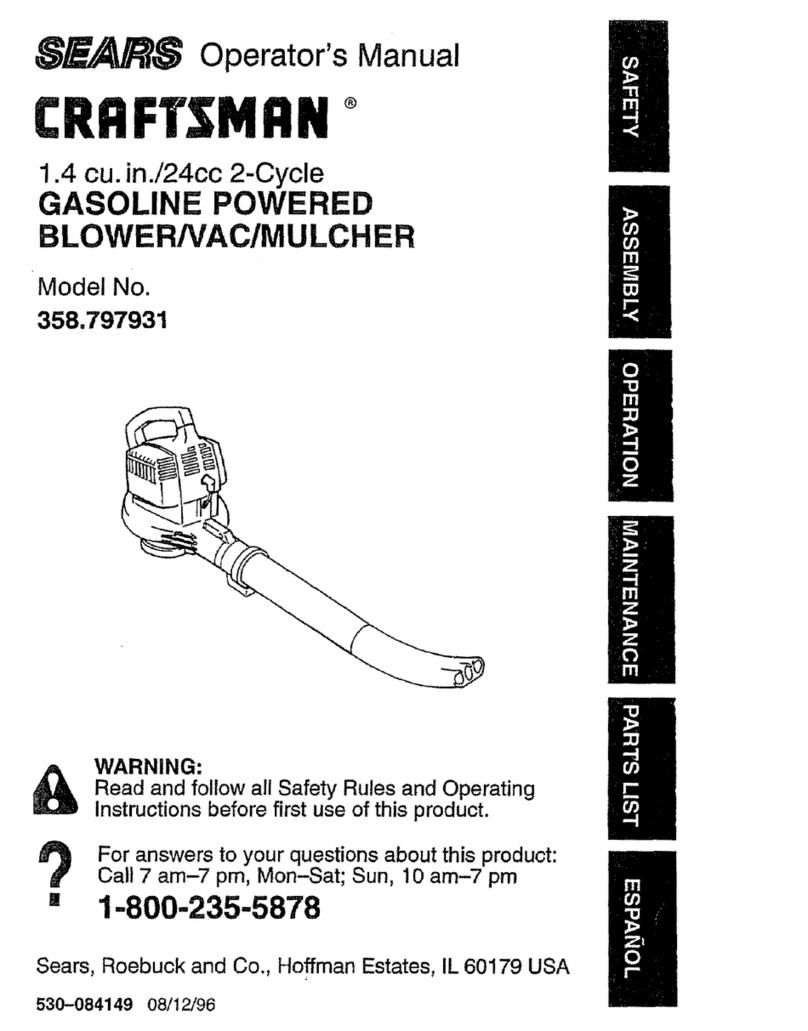
Craftsman
Craftsman 358.797931 Operator's manual

Vari
Vari CB-80 Translation of the original instructions
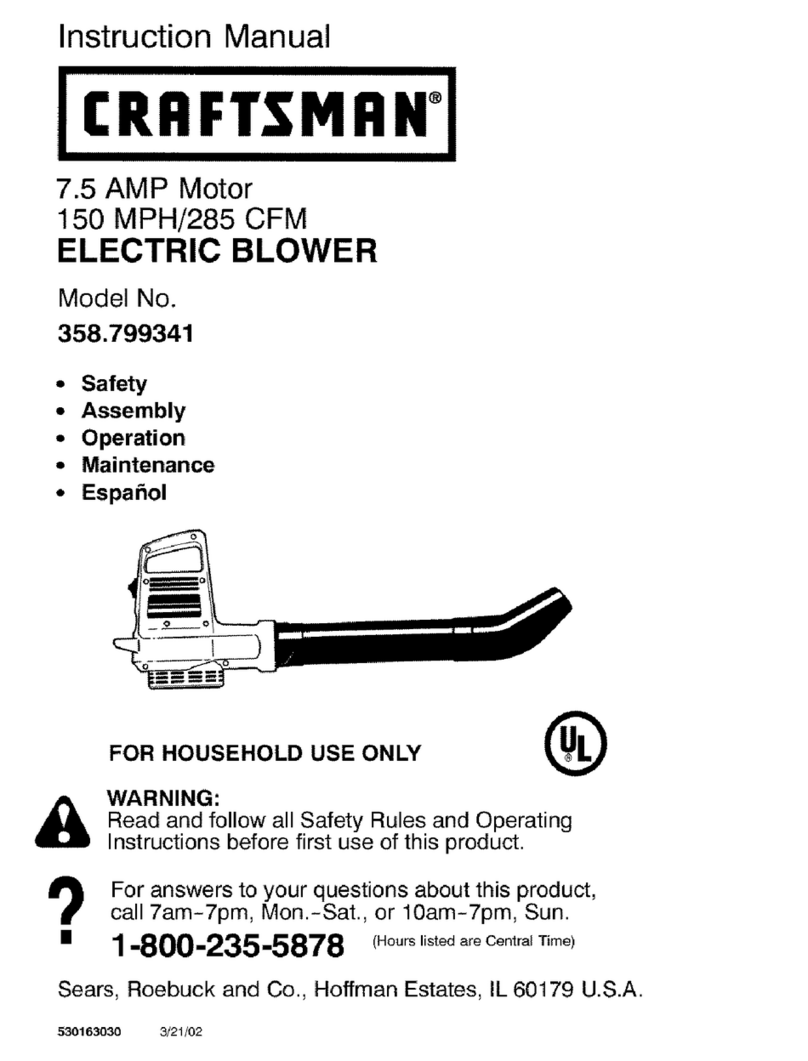
Craftsman
Craftsman 358.799341 instruction manual
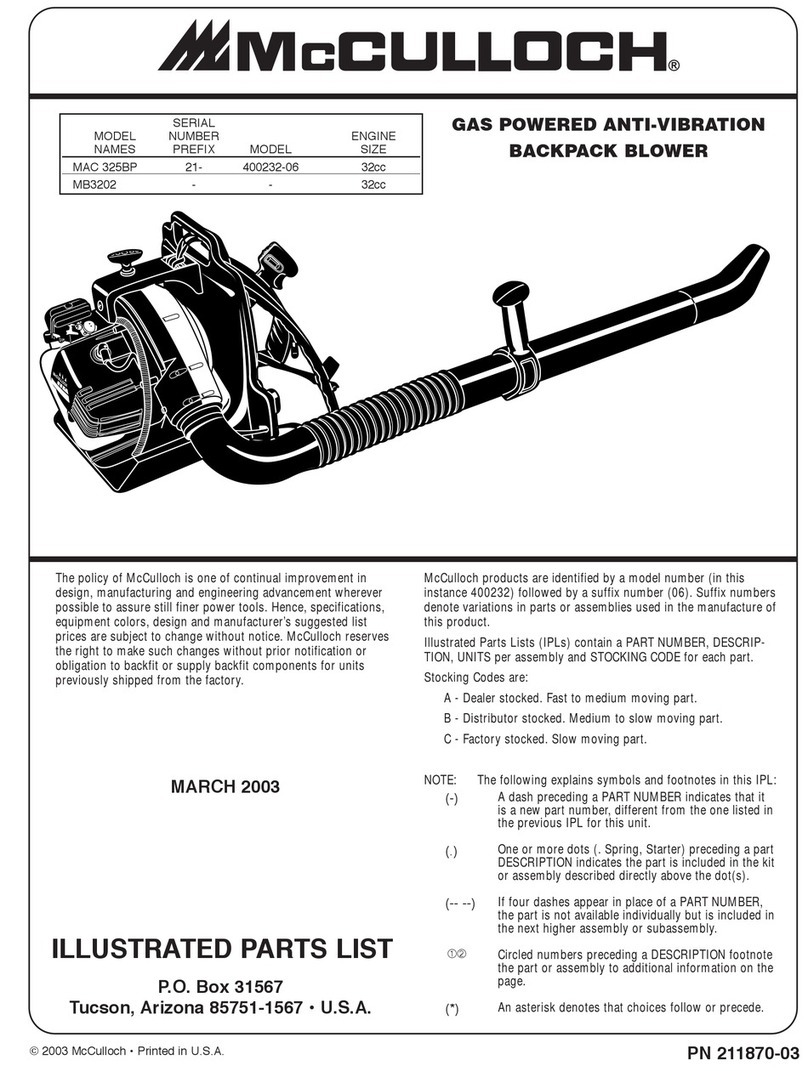
McCulloch
McCulloch MB3202 Illustrated parts list
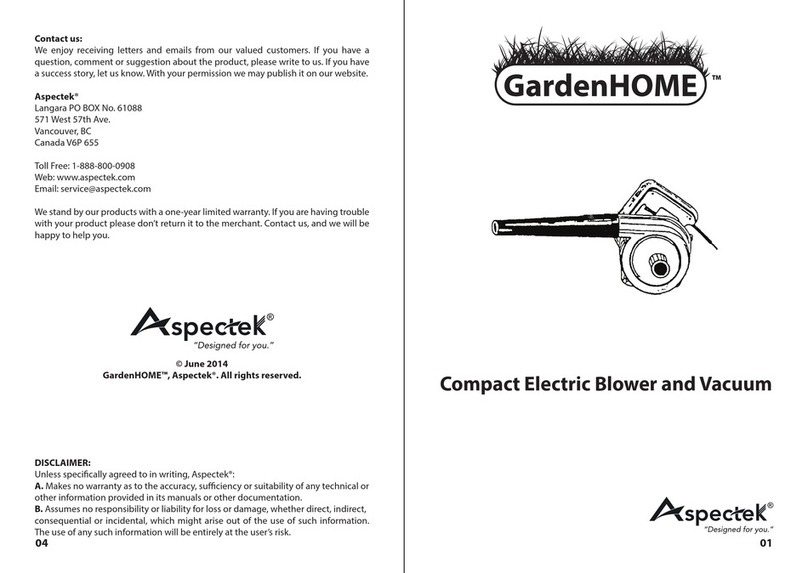
Aspectek
Aspectek GardenHOME Compact Electric Blower and... manual


